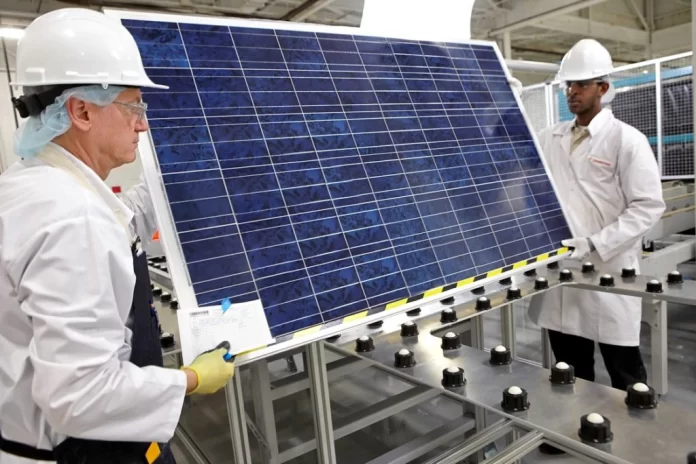Canadian Solar expects to start shipping the first TOPCon products early next year and will focus on the technology in the future with all new cell production capacity.
N-type TOPCon is expected to account for a third of total solar module shipments of the company in 2023, according to Yan Zhuang, president of CSI Solar, the manufacturing subsidiary.
The company shipped 6GW of modules during the third quarter of the year, increasing by 62% on results in the corresponding quarter of 2021.
Module shipments for Q3 2022 alone was higher than the whole of 2016, as shown in the chart below, and improves on the more than 5GW shipped in the previous quarter.
The company has disclosed its outlook guideline for module shipments in 2023 to be between 30-35GW, a 56% growth year-on-year at the midpoint of the range.
In Q4 2022 the company’s manufacturing division expects to ship between 6-6.3GW of modules and revenues for Canadian Solar to be in the range of US$1.8-1.9 billion.
The top five markets for Q3 2022 were China, the US, Brazil, Spain and Germany, while the company shipped modules to more than 70 countries.
As the US remains one of the core markets for the company, Canadian Solar has started the process to select a site for its manufacturing facility that could support up to 5GW of module capacity in the long-term, according to Zhuang.
During Q3 2022 the company had a net revenue of US$1.93 billion, up 57% from the corresponding quarter in 2021, primarily driven by an increase in module shipments and the average selling price (ASP).
However, revenue was down 16% quarter-over-quarter due to lower revenue from projects sales and battery storage solutions and a decline in ASP that was offset by an increased volume of module shipments.
Shawn Qu, chairman and CEO at Canadian Solar, said: “Global demand remains very strong and previous supply chain and cost headwinds are improving with lower input and logistics costs. We still face near-term challenges with volatility in foreign exchange rates, which we are closely monitoring and will continue to take appropriate actions to mitigate the impact.”
Meanwhile in China, the company’s IPO to be listed on the Shanghai Stock Exchange has yet to receive a favourable answer. The IPO is closely tied to the US$9 billion polysilicon expansion the company is planning to invest in for the coming years, according to Qu.
Moreover, the company expects polysilicon prices to have reached their peak with input costs to start decreasing over the coming weeks, said Yan Zhuang, president of CSI Solar, the manufacturing subsidiary, adding that benefits from it will not happen until next year.
The manufacturing subsidiary, CSI Solar, continues to increase its battery storage pipeline which more than doubled to 25GWh at the end of Q3 2022, with several projects across the US – with a 2.6GWh supply order from UBS Asset Management announced just yesterday – and Europe and launched two new products aimed at the utility-scale and residential markets.
Last September, Canadian Solar revealed it was behind the company Zapaleri that received a successful 253MWp bid in Chile’s latest auction while this month the company inaugurated a 100 MW solar plant in Fukushima, Japan.





